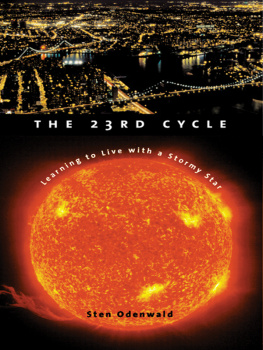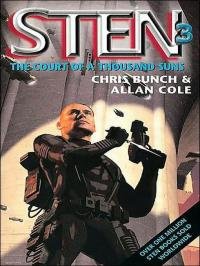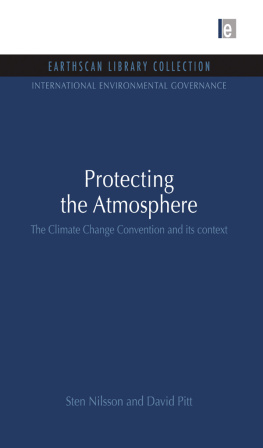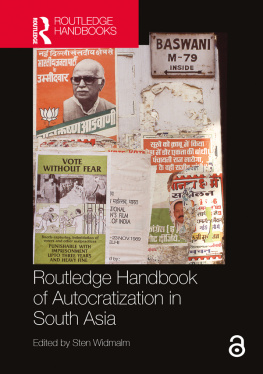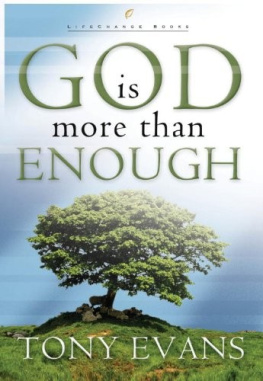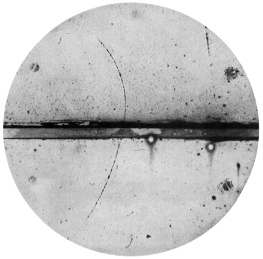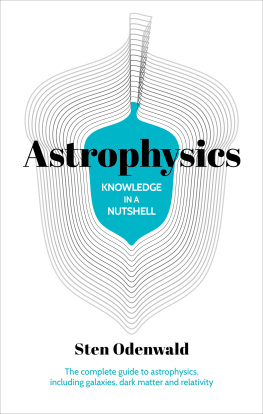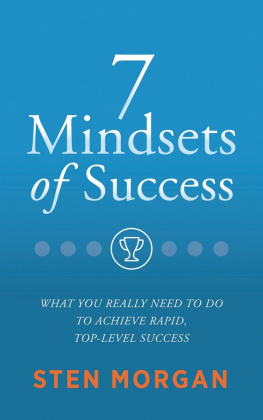Sten F. Odenwald - The 23rd Cycle: Learning to Live with a Stormy Star
Here you can read online Sten F. Odenwald - The 23rd Cycle: Learning to Live with a Stormy Star full text of the book (entire story) in english for free. Download pdf and epub, get meaning, cover and reviews about this ebook. year: 2002, publisher: Columbia University Press, genre: Art. Description of the work, (preface) as well as reviews are available. Best literature library LitArk.com created for fans of good reading and offers a wide selection of genres:
Romance novel
Science fiction
Adventure
Detective
Science
History
Home and family
Prose
Art
Politics
Computer
Non-fiction
Religion
Business
Children
Humor
Choose a favorite category and find really read worthwhile books. Enjoy immersion in the world of imagination, feel the emotions of the characters or learn something new for yourself, make an fascinating discovery.
- Book:The 23rd Cycle: Learning to Live with a Stormy Star
- Author:
- Publisher:Columbia University Press
- Genre:
- Year:2002
- Rating:5 / 5
- Favourites:Add to favourites
- Your mark:
- 100
- 1
- 2
- 3
- 4
- 5
The 23rd Cycle: Learning to Live with a Stormy Star: summary, description and annotation
We offer to read an annotation, description, summary or preface (depends on what the author of the book "The 23rd Cycle: Learning to Live with a Stormy Star" wrote himself). If you haven't found the necessary information about the book — write in the comments, we will try to find it.
The 23rd Cycle: Learning to Live with a Stormy Star — read online for free the complete book (whole text) full work
Below is the text of the book, divided by pages. System saving the place of the last page read, allows you to conveniently read the book "The 23rd Cycle: Learning to Live with a Stormy Star" online for free, without having to search again every time where you left off. Put a bookmark, and you can go to the page where you finished reading at any time.
Font size:
Interval:
Bookmark:
The 23rd Cycle
Columbia University Press
Publishers Since 1893
New York, Chichester, West Sussex
cup.columbia.edu
Copyright 2001 Sten F. Odenwald
All rights reserved
E-ISBN 978-0-231-50593-2
Library of Congress Cataloging-in-Publication Data
Odenwald, Sten F.
The 23rd cycle : learning to live with a stormy star / Sten F. Odenwald.
p. cm.
Includes bibliographical references and index.
ISBN 0231120788 (cloth)ISBN 0231120796 (pbk.)
1. Solar activityEnvironmental aspects. I. Title: Twenty-third cycle. II. Title.
QB524.O34 2000
538.746dc21 00-059647
A Columbia University Press E-book.
CUP would be pleased to hear about your reading experience with this e-book at .
To my parents, Rosa and Sten, who never got to see their sons handiwork
The writing of a book such as this was an exciting process, made even more so by many people who helped me understand the dimensions of this subject and express it clearly. My wife, Sue, and my daughters, Emily Rosa and Stacia Elise, gave me a tremendous amount of support by just being there and understanding my peculiar early morning writing rituals. We are all going to look forward to having more breakfasts together again! I would like to thank my editor, Holly Hodder at Columbia University Press, for her enthusiasm for this project and the many excellent suggestions she made in helping me organize this material to make it readable. If you should find this book both thought provoking and captivating, it is largely to Hollys credit. I would also like to thank Susan Pensak for her excellent job of copyediting this book.
A subject as large as this, with as many facets, has to be written with great care, and I am grateful for the help I received from many colleagues and experts in space weather issues, NASA policy, and the industrial community. I would like to thank Joe Allen at the National Geophysical Data Center for his careful reading of the manuscript and numerous excellent suggestions and comments. I also thank George Withbroe, director of NASAs Office of Space Science, for explaining to me NASAs Living with a Star program. Any errors or misunderstandings you may uncover in this book about current policy, budget, or program issues in space weather are entirely the fault of the author. I would like to thank James Burch, Shing Fung, Dennis Gallagher, Jim Green, Pat Reiff, and Bill Taylor of the IMAGE satellite project for many conversations about space weather issues and IMAGE science objectives. I am grateful to John Kappenman at Metatech for helping me to understand the electrical power industry and GICs. I would like to thank Art Poland, former project manager for the NASA SOHO program, Eric Christian, ACE deputy project scientist, and Tycho von Rosenvinge, ACE coinvestigator, for their insight into how these space science missions operate. Barbara Thompson, E. Stassinopoulos, and Michael Lauriente at the NASA Goddard Space Flight Center were most helpful in explaining to me how individual researchers in space science receive their funding and how radiation mitigation issues are being investigated. Mike Vinter, vice president of International Space Brokers, Inc., was very helpful in describing the way that satellite insurers operate, which for me dispelled several important misconceptions about this fascinating and highly volatile subject.
There was a great deal of material that had to be trimmed to keep the story focused. Please visit the Astronomy Cafe web site (http://www.theastronomycafe.net) and click on the link for Space Weather. This page contains notes for each chapter and more bibliographic information about space weather issues. Updates on the progress of the 23rd Cycle and its impacts can be found on-site as the information becomes available as well. I will also post any corrections to material in the printed version of this book. If you have questions or comments about this book, or on the subject, please visit the web site and send me an e-mail letter. I will post these in a public FAQ area on the web site along with my responses, as time permits.
The 23rd Cycle is certainly an odd-sounding title for a book. Chances are, without the subtitle, Learning to Live with a Stormy Star, you might think this is a book about a new washing machine setting or some New Age nonsense. Instead, what you are going to find is a story about how we have misjudged what a garden variety star can do to us when we arent paying attention. Consider this: solar storms have caused blackouts that affect millions of people; they have caused billions of dollars of commercial satellites to malfunction and die; they may also have had a hand in causing a gas pipeline rupture that killed five hundred people in 1989. Despite this level of calamity, the odds are very good that you have never heard about most of these impacts, because they are infrequent, the news media does not make the connection between solar storms and technological impacts, and there are powerful constituencies who would just as soon you not hear about these kinds of anomalies.
For over 150 years, telescopic views of the Suns surface have revealed a rhythmic rise and fall in the number of sunspots. Each cycle lasts about eleven years from sunspot maximum to sunspot maximum, and, in step with this, scientists have found many other things that keep a rough cadence with it. The Northern and Southern Lights (aurora) are more common during sunspot maximum than minimum. Titanic solar flares brighter than a million hydrogen bombs also come and go with this cycle. But there is a darker side to these events. Solar flares can kill, aurora can cause blackouts, and satellites can literally be forced out of the sky.
My own professional contact with solar activity came in the 1990s when a change in my working circumstances found me confronting the various hobgoblins of space science for the first time since graduate school. These kinds of changes are usually a wake-up call for most people, but for me it meant that a fifteen-year research program in infrared astronomy had come to an end. NASAs COBE satellite program ended in 1996, and so, for a variety of complicated reasons, did much of my full-time research. For the first time, I found myself with only enough grant money to support my career as an astronomer for eight hours a week. In my case, the Suns talent for raising havoc became something of a professional life preserver.
Very luckily, NASA had just given the go-ahead to James Burch at Southwest Research Institute in San Antonio, Texas, to begin work on the Imager for Magenetopause-to-Auroral Global Exploration (IMAGE). It was a satellite that would orbit the Earth and keep watch on the movement of energetic particles as the Sun threw its various tantrums. Although they didnt have much use for an astronomer, they did have funds to set up an education and public outreach program. This program would be handled by Raytheons Information and Technical Services, Maryland divisionmy employer. It didnt take long before William Taylor, who was the director of the IMAGE education and outreach effort, hired me to help turn their proposed program, called POETRY (Public Outreach, Education, Teaching, and Reaching Youth), into a real flesh-and-blood education program for students, teachers, and the general public.
I began to realize that space science was a very long way from the kind of astronomical research I had been doing for the last fifteen years. I was unfamiliar with the fields scientific issues, and I had hardly a clue about how to capture the publics imagination in an area I regarded as rather far removed from the publics mind. It had nothing to do with gravity, black holes, cosmology, or the topography of the Milky Way. It had everything to do with magnetism, the Sun, and invisible processes operating around the Earth.
Next pageFont size:
Interval:
Bookmark:
Similar books «The 23rd Cycle: Learning to Live with a Stormy Star»
Look at similar books to The 23rd Cycle: Learning to Live with a Stormy Star. We have selected literature similar in name and meaning in the hope of providing readers with more options to find new, interesting, not yet read works.
Discussion, reviews of the book The 23rd Cycle: Learning to Live with a Stormy Star and just readers' own opinions. Leave your comments, write what you think about the work, its meaning or the main characters. Specify what exactly you liked and what you didn't like, and why you think so.

